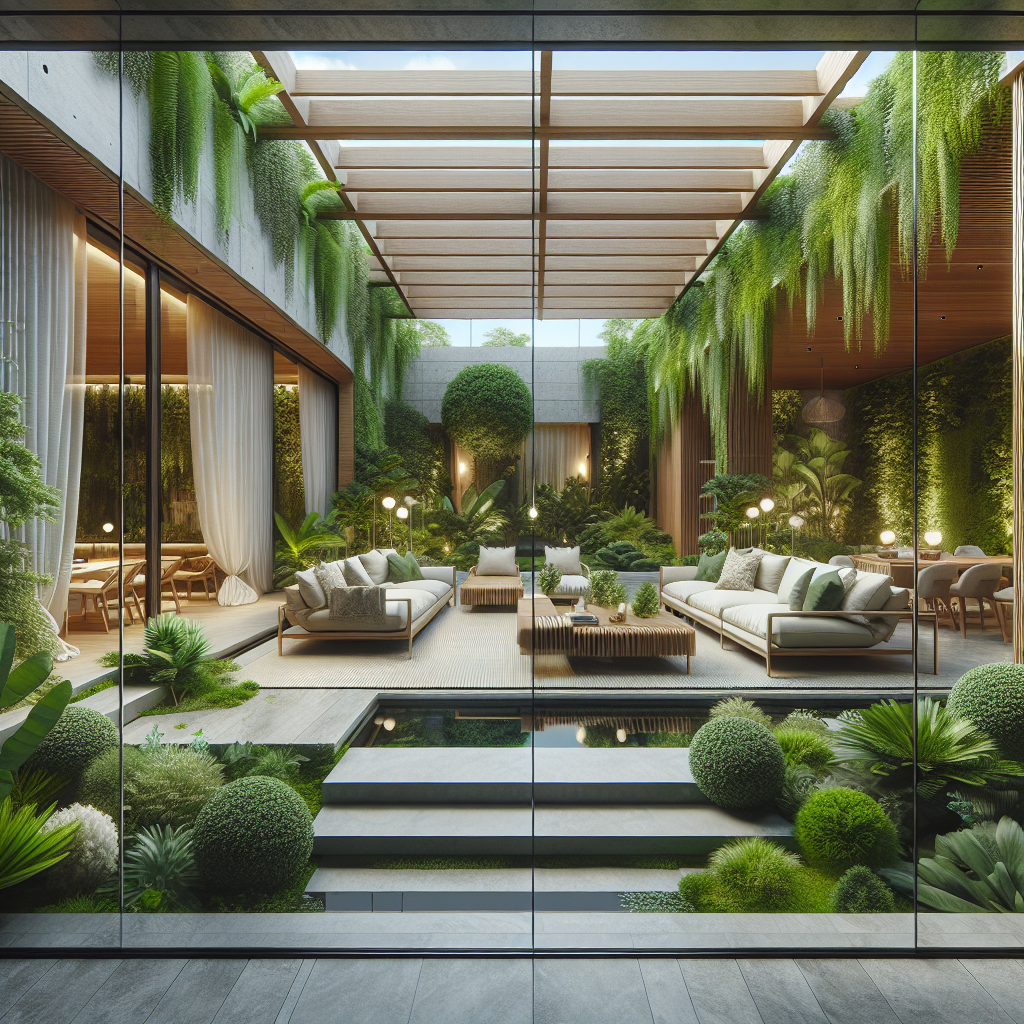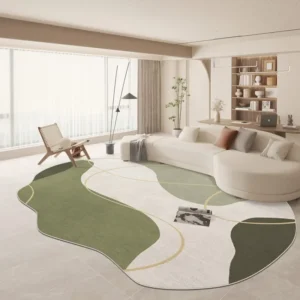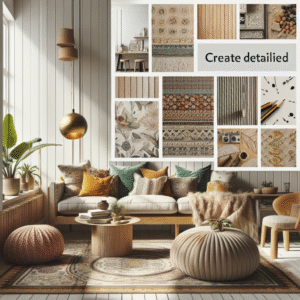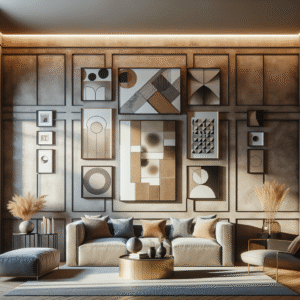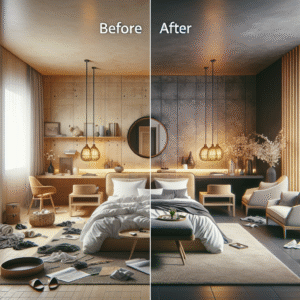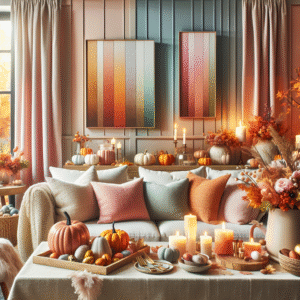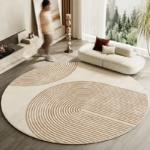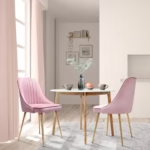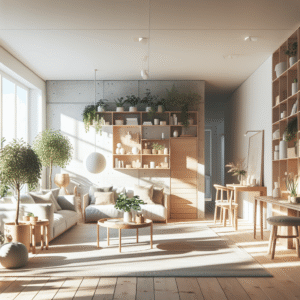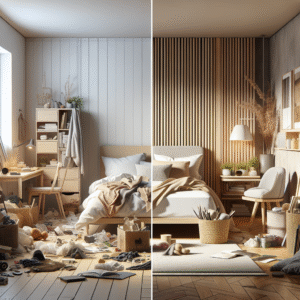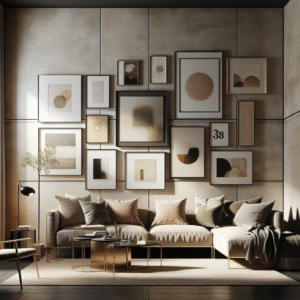Creating Garden Room Extensions With Glass Wall Systems
Are you dreaming of a tranquil space to unwind, work, or entertain? Imagine a beautiful garden room extension, seamlessly blending natural light and outdoor views through sleek glass wall systems. This article will guide you through creating your own garden room extension, revealing not just the aesthetic benefits but also practical considerations like installation, design options, and costs.
With the rising popularity of garden rooms, the use of glass wall systems has become a game-changer, offering an elegant transition between indoor and outdoor spaces. You’ll learn about different design ideas, the benefits of glass in your garden room, installation tips, and much more. By the end of this article, you will be equipped with the necessary insights to create a functional and stylish garden retreat.
1. Benefits of Garden Room Extensions
Garden room extensions with glass wall systems offer numerous benefits, making them a popular choice for homeowners. Here are some of the significant advantages:
1.1 Enhanced Natural Light
One of the most significant advantages is the abundance of natural light. Glass wall systems allow daylight to flood your space, creating a bright and welcoming environment. Studies indicate that natural light enhances mood and productivity, making your garden room ideal for work or relaxation.
1.2 Connection with Nature
Another compelling benefit is the seamless connection to your garden and surrounding nature. With panoramic glass walls, you can enjoy picturesque views throughout the seasons while maintaining a sense of indoor comfort.
1.3 Versatility of Use
Whether you need a home office, a yoga studio, or an entertainment space, a garden room extension is versatile. Customize the interior to serve various purposes, making it a valuable addition to your property.
2. Design Ideas for Your Garden Room
When planning your garden room extension, consider various design concepts that integrate well with glass wall systems:
2.1 Minimalist Design
A minimalist approach emphasizes simplicity and functionality. Choose clean lines and neutral colors to create a calming atmosphere. Incorporate furniture that complements the overall aesthetic without overwhelming the space.
2.2 Biophilic Design
This design philosophy encourages a deeper connection with nature. Use natural materials for flooring and furniture, and consider incorporating indoor plants and water features to enhance the feel of outdoor living.
2.3 Multi-Functional Spaces
Design your garden room to serve multiple functions. For example, a home office by day can transform into a cozy lounge in the evening. Use flexible furnishings like foldable tables and stackable chairs to maximize the space’s utility.
3. Choosing the Right Glass Wall System
Selecting the appropriate glass wall system is crucial for the success of your project. Here are considerations to keep in mind:
3.1 Types of Glass
Consider tempered glass for durability and safety. Laminated glass offers additional insulation, while low-E (low emissivity) glass reduces heat loss, enhancing energy efficiency.
3.2 Frame Materials
When choosing frame materials, options typically include aluminum, wood, and uPVC. Aluminum frames are modern and sleek, while wooden frames provide a natural aesthetic. Select materials that align with your design vision while considering durability and maintenance.
3.3 Energy Efficiency
Ensure your glass wall system is energy-efficient. Double or triple glazing can help regulate temperature, keeping your garden room comfortable year-round. Look for systems with a good thermal performance rating to minimize heating and cooling costs.
4. Installation Process for Glass Wall Systems
Installation is a critical phase of creating your garden room extension. Follow these steps for a successful outcome:
4.1 Planning and Permits
Before installation, consult your local building authority to ensure compliance with zoning laws and acquire the necessary permits.
4.2 Preparing the Site
Clear the installation site, ensuring level ground and adequate drainage. This preparation is vital for the longevity of your garden room.
4.3 Professional Installation vs. DIY
While some homeowners opt for DIY installation, hiring professionals often yields better results. Experienced installers will ensure that the glass is secured correctly, minimizing risks of leaks and structural issues.
5. Cost Considerations of Garden Room Extensions
Understanding the costs associated with adding a garden room is essential for budgeting. Here are key factors that influence expenses:
5.1 Material Costs
Factors including the type of glass, frame material, and insulation impact your overall expenditure. Budgeting for quality materials can be an investment in the long-term durability of your garden room.
5.2 Labor Costs
Whether you choose DIY or professional installation, labor costs play a significant role in your budget. For larger projects, hiring experienced contractors may increase upfront costs but save you money on potential repairs later.
5.3 Additional Features
Consider enhanced features like automated blinds, HVAC systems, or lighting solutions that can elevate your garden room experience but may also add to your costs. Prioritize features that align with your intended use and budget.
6. Maintenance of Glass Wall Systems
Proper maintenance ensures the longevity and aesthetics of your glass walls:
6.1 Regular Cleaning
Cleaning your glass walls regularly prevents grime build-up and maintains clarity. Use vinegar and water or a specialized glass cleaner for streak-free results.
6.2 Inspecting Seals and Frames
Periodically inspect seals and frames for wear. Address any issues promptly to prevent leaks and maintain energy efficiency.
6.3 Seasonal Maintenance
Prepare your garden room for seasonal changes. This might include weather stripping in winter or ensuring proper ventilation in summer.
FAQ Section
What is a garden room extension?
A garden room extension is a standalone structure typically situated in a garden, designed for various uses like leisure, work, or hobbies, often incorporating glass wall systems.
What are the benefits of glass wall systems?
Benefits of glass wall systems include enhanced natural light, improved views of nature, energy efficiency, and modern aesthetics.
Do I need planning permission for a garden room?
Yes, you typically require planning permission, but regulations vary. Always check with your local building authority to confirm.
Can I install a glass wall system myself?
Although DIY installation is possible, hiring professionals is recommended to ensure safety, efficiency, and proper installation.
What types of glass are best for garden rooms?
Tempered, laminated, and low-E glass types are preferred for garden rooms due to their durability and energy efficiency.
Conclusion
Creating a garden room extension with glass wall systems opens up a world of possibilities, enhancing your home’s value and living experience. From maximizing natural light to creating a serene connection with nature, the benefits are as diverse as the design options. Whether you’re a DIY enthusiast or leaning towards hiring professionals, understanding the planning, materials, and maintenance involved will set you on the path to success.
Ready to take the next step? Explore further resources, consult professionals, or get started with your designs today! Your dream garden retreat is just a project away.
Content Disclaimer
The information provided in this article is for educational purposes only. It is not professional advice. Consult relevant experts for tailored recommendations.
Categories
- Accent Walls & Ceilings (13)
- Art Curation & Gallery (28)
- Bedding Style Trends (41)
- Bedroom Makeover (33)
- Bohemian & Eclectic Styles (13)
- DIY & Budget-Friendly Decor (12)
- Eco-Friendly Design (13)
- Furniture Care (32)
- Home Decor & Design Ideas (102)
- Home Wellness Spaces (13)
- Integrated Outdoor Living (12)
- Kids and Nursery Decor (13)
- Living Room Decor (33)
- Minimalist & Japandi Style (16)
- Mix & Match Techniques (32)
- Modern & Contemporary Design (12)
- Rug Sizing & Placement (32)
- Seasonal Home Decor (35)
- Small Space Solutions (17)
- Wall Art & Painting Tips (35)
Recent Posts
Recent Comments
Archives
Product Gallery
-
 Large Area Green Rugs for Bedroom Nordic Living Room Decoration Shaped Carpet Irregular Plush Lounge Rug Home Thick Washable Mat Rated 5.00 out of 5$57.07 – $359.83Price range: $57.07 through $359.83
Large Area Green Rugs for Bedroom Nordic Living Room Decoration Shaped Carpet Irregular Plush Lounge Rug Home Thick Washable Mat Rated 5.00 out of 5$57.07 – $359.83Price range: $57.07 through $359.83 -
 Nordic Style Rugs for Bedroom Morandi Living Room Decoration Carpet Large Area Geometry Lounge Rug Home Cloakroom Non-slip Mat Rated 5.00 out of 5$40.98 – $620.81Price range: $40.98 through $620.81
Nordic Style Rugs for Bedroom Morandi Living Room Decoration Carpet Large Area Geometry Lounge Rug Home Cloakroom Non-slip Mat Rated 5.00 out of 5$40.98 – $620.81Price range: $40.98 through $620.81 -
 Irregular Shapes Living Room Decoration Carpet Modern Style Rugs for Bedroom Home Thicken Plush Rug Fluffy Soft Lounge Floor Mat Rated 4.75 out of 5$58.00 – $360.83Price range: $58.00 through $360.83
Irregular Shapes Living Room Decoration Carpet Modern Style Rugs for Bedroom Home Thicken Plush Rug Fluffy Soft Lounge Floor Mat Rated 4.75 out of 5$58.00 – $360.83Price range: $58.00 through $360.83
